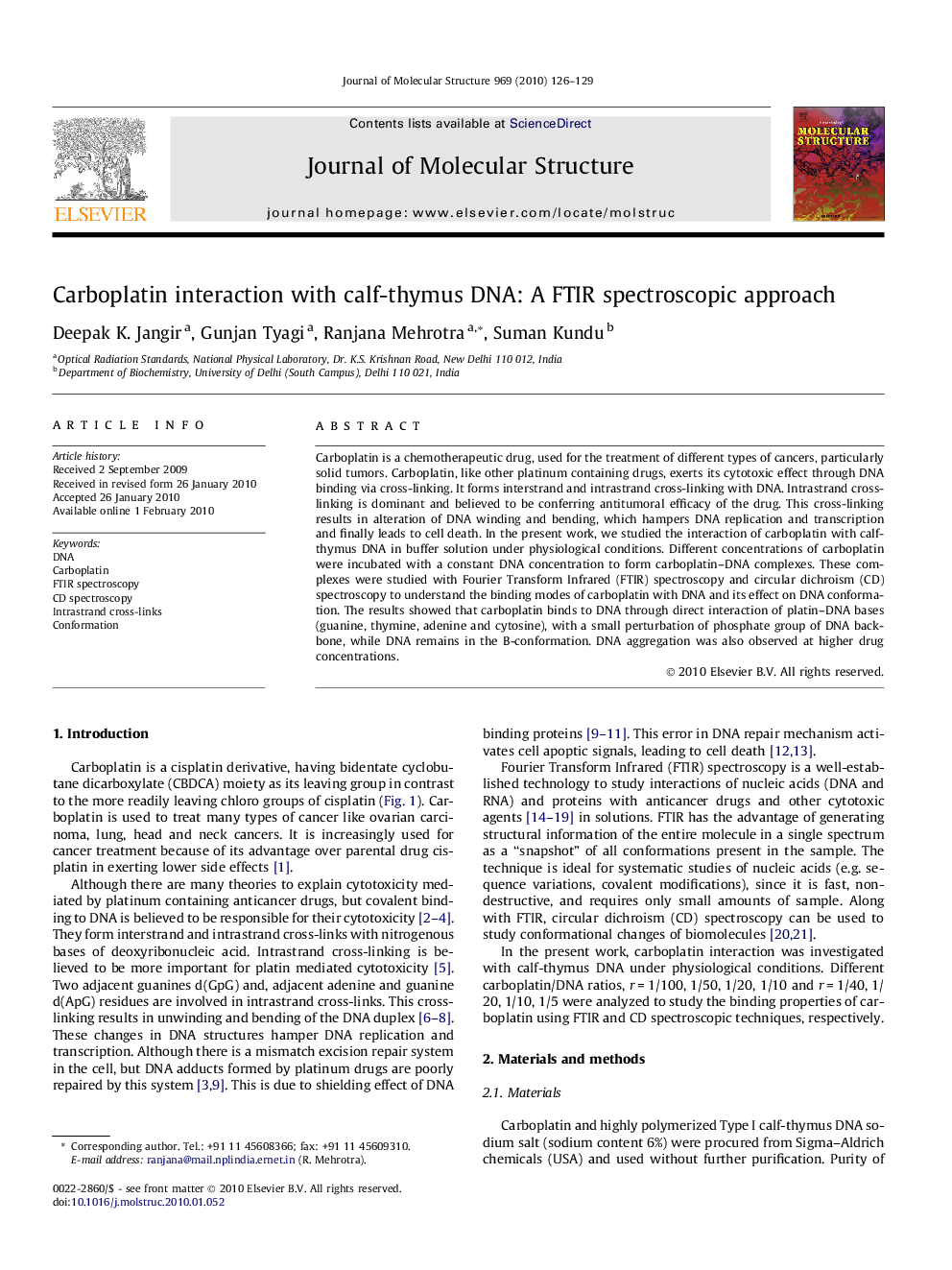| Article ID | Journal | Published Year | Pages | File Type |
|---|---|---|---|---|
| 1406265 | Journal of Molecular Structure | 2010 | 4 Pages |
Carboplatin is a chemotherapeutic drug, used for the treatment of different types of cancers, particularly solid tumors. Carboplatin, like other platinum containing drugs, exerts its cytotoxic effect through DNA binding via cross-linking. It forms interstrand and intrastrand cross-linking with DNA. Intrastrand cross-linking is dominant and believed to be conferring antitumoral efficacy of the drug. This cross-linking results in alteration of DNA winding and bending, which hampers DNA replication and transcription and finally leads to cell death. In the present work, we studied the interaction of carboplatin with calf-thymus DNA in buffer solution under physiological conditions. Different concentrations of carboplatin were incubated with a constant DNA concentration to form carboplatin–DNA complexes. These complexes were studied with Fourier Transform Infrared (FTIR) spectroscopy and circular dichroism (CD) spectroscopy to understand the binding modes of carboplatin with DNA and its effect on DNA conformation. The results showed that carboplatin binds to DNA through direct interaction of platin–DNA bases (guanine, thymine, adenine and cytosine), with a small perturbation of phosphate group of DNA backbone, while DNA remains in the B-conformation. DNA aggregation was also observed at higher drug concentrations.
